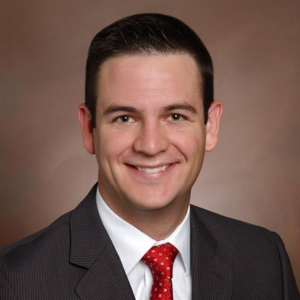Daniel Ozzello, MD, assistant professor of ophthalmology at the University of Colorado School of Medicine, sometimes compares treating thyroid eye disease, an autoimmune disease that affects muscles and tissue behind the eye, to a flood.
“In the past, we would wait until the disease had run its course while trying to prevent vision loss. Once the disease had slowed down, we would conduct reconstructive surgeries to put things back where they used to be, like waiting for flood waters to recede before cleaning up and rebuilding,” he says. “Now, I explain to my patients that if you find a leak in your house, you want to fix it as fast as possible.”
New treatment options are becoming more personalized and allow us to intervene earlier in the course of disease, explains Ozzello, who presented “Individualized Treatment Approaches to Thyroid Eye Disease” at the CU Department of Ophthalmology’s 27th Annual Ophthalmology Symposium.
These new options give ophthalmologists and patients more options to consider, creating a treatment plan best suited for the individual.
Possibilities with personalized treatments
A new era of treatments for thyroid eye disease means more options that are tailored to the patient.
“We’re just opening the lid on individualized treatments,” Ozzello says. “Some of these newer medications on the market are now more widely available, so we can work with the patient to find a path that makes the most sense for them.”
The disease causes muscle and fat to grow behind the eyes, which can lead to bulged eyes, red or swollen eyelids, the appearance of bags under the eyes, and some vision problems, such as blurriness or double vision. Research conducted by Ozzello and others in the department shows patients with bigger muscles relative to fat typically respond well to medication, regardless of how long they’ve experienced the disease.
Some newer medications, such as teprotumumab, aim to cure the disease and are already FDA approved. Numerous other medications are under investigation in clinical trials at the Sue Anschutz-Rodgers Eye Center. The treatments are targeted at the cellular level, blocking proteins that cause the disease.
“Not everybody has a full response,” Ozzello explains. “But the goal is prevention of vision problems and early treatment.”
Giving power to the patient
Before medications became more widely available, patients would often need multiple reconstructive surgeries. They would undergo orbital decompression surgery, then strabismus surgeries, and finally eyelid surgeries. New medications come in the forms of injections or infusions, similar to chemotherapy.
“Now, the new medications help to avoid having to do the decompression surgery,” Ozzello says. “That first surgery is typically the hardest and most risky surgery. Medications may also help bypass strabismus surgery, too.”
Even with the new medical alternatives, some surgery might be required. “But hopefully it’s less invasive and less risky than what we would have done without the medications,” Ozzello says.
The new medications play another important role in care – a better patient-doctor relationship.
“We’ve seen the ability to talk through options evolve,” Ozzello says. “We can talk about a lot of different options and better educate patients to help them be more involved and feel more empowered in their care.”
“It’s a really powerful thing in medicine when you’re able to help patients feel like they are getting to make the best choices for them that are aligned with their goals,” he continues. “They get to be in the driver’s seat more than ever.”


.png)

